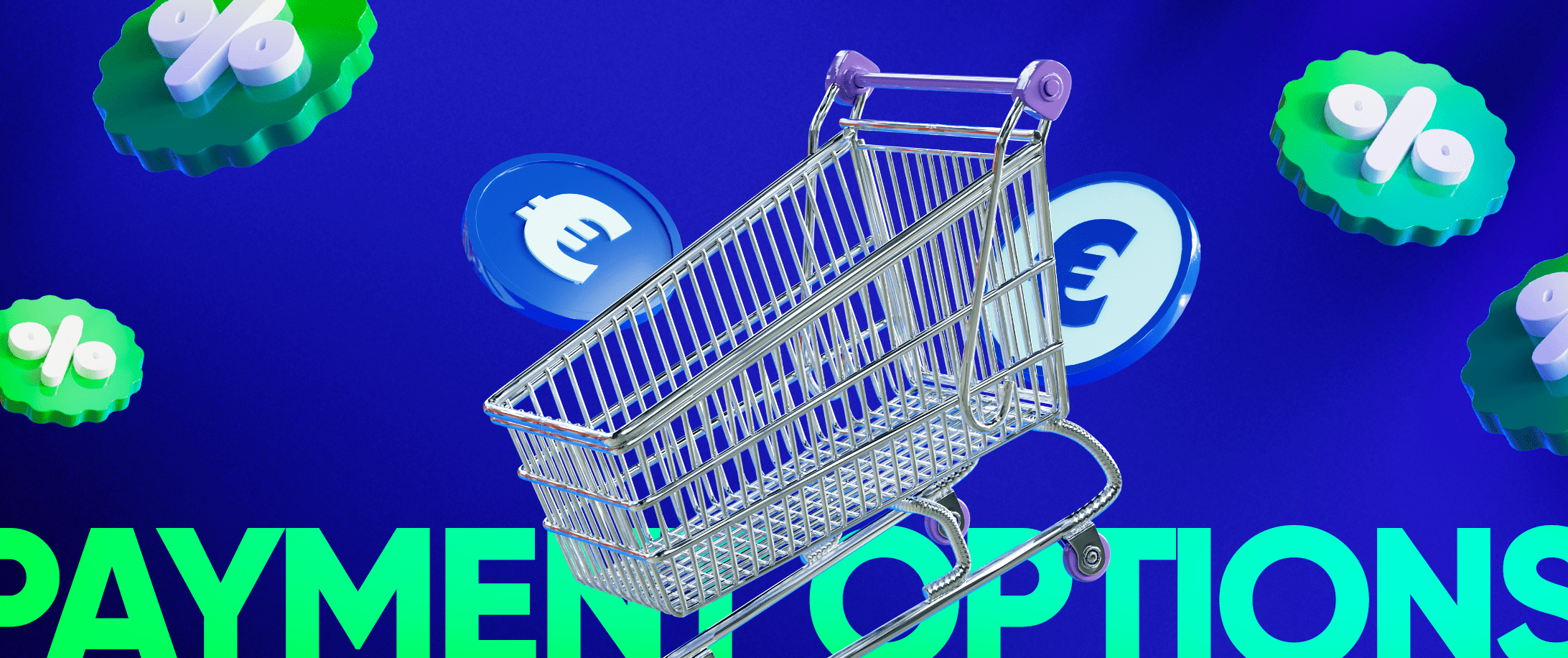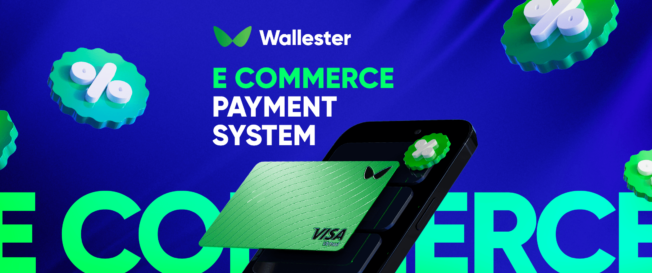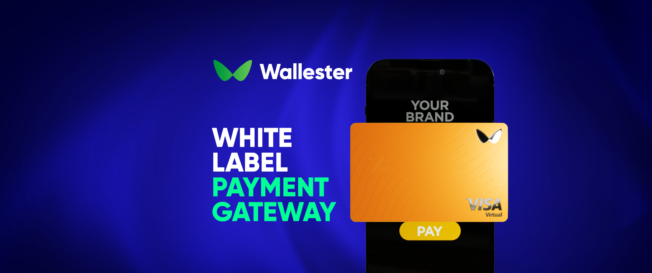E-commerce businesses need reliable, flexible online payment systems to accept payments from customers quickly, securely, and easily across websites, mobile apps, and in-person retail. Choosing and integrating the right solutions ensures your company can onboard buyers faster while saving on processing overheads and fraud losses.
This comprehensive guide provides merchants with an overview covering everything needed regarding accepting payments online.
What Are Payment Gateways? 🌐
A payment gateway authorizes debit card and credit card transactions for electronic commerce businesses. It’s the technology that safely handles customer payment details when your online store checkout connects to the relevant bank and payment networks during purchase processing.
Payment gateways power secure verification and transfer of payment information between your website and the companies handling moving the funds via payment processors and card issuers. This enables online businesses to take payments directly through their website without complex certified integrations with each provider in the ecosystem.
Popular third-party payment gateway providers include names like Stripe, PayPal, Square, and Authorize.Net. First-party solutions also exist, such as Amazon Pay for Amazon’s marketplaces. Typically, these provide easy-to-integrate APIs and SDKs that online businesses can incorporate to build customized checkouts on their website and mobile apps. Some also offer pre-made hosted checkout pages configurable to match your branding needs.
How Do Payment Gateways Work? 🛠️
When a customer buys your product online, the payment gateway facilitates the interaction between your e-commerce platform and the other parties to safely handle transactions. Here is how payment gateways function behind the scenes when a customer initiates checkout on your website:
- Customer chooses products on your e-commerce store and proceeds to checkout, entering his payment details. This would include confidential payment information like credit card numbers that need securing.
- Your website sends transaction data like purchase amount and payment info to the payment gateway, leveraging encryption to maintain security.
- The payment gateway receives the encrypted data and, based on transaction value thresholds, runs fraud checks in line with its risk assessment protocols. Additional verification details may be requested from the customer if needed.
- If fraud checks pass, the gateway routes the payment data through the relevant financial networks to get the transaction authorized and processed. This is where ecosystem partners like payment services and card issuers come in.
- The card issuer, the customer’s bank in case of debit cards, approves the payment. This means verifying that the funds are available in the customer’s account and putting a hold on the payment request.
- The payment processor handles transferring the funds into your merchant account, including managing any currency conversion if needed. This links back to the payment gateway.
- On successful authorization and processing, the gateway sends a confirmation message back to your website so you can conclude the purchase for the customer appropriately.
The entire process happens quickly, typically in under 15 seconds. This allows customers to complete checkout fast while payment gateways do the heavy lifting in the background across verification, processing, and security.
Understanding E-commerce Payment Processing 📈
E-commerce payment processing refers to the steps involved in moving transaction funds between relevant parties when an online purchase occurs. The major entities include:
- Customer: The shopper who initiates payment on your e-commerce store to buy your products or services online. They own the bank account (net banking ID), or card used to pay.
- Your e-commerce business: As the merchant selling online, you receive customer payments into your business’ bank account. Getting paid quickly and securely is vital.
- Acquiring bank: This is the financial institution providing your e-commerce merchant account where customer payments get credited via connected payment processing networks.
- Card networks: These are card schemes like Visa, Mastercard, and American Express that provide the rails for moving payment information between customers, online merchants, and issuers.
- Issuing bank: The bank that issued the debit/credit card or manages the bank account being used by the customer to pay you. For credit cards, this bank provides the credit funding while handling bills.
- Payment processor: Companies like Stripe that operate the actual funds transfer mechanism between acquiring and issuing banks along with settlement into your merchant account.
- Payment gateways: Services like PayPal Braintree that authorize card payments by securely passing encrypted transaction data between merchants, payment processors, and issuing banks.
The transaction flow connects these parties:
- Customer initiates a transaction on your website, using a supported funding source like a bank account, card, or wallet balance to pay.
- Your e-commerce platform securely sends this payment authorization to the connected payment gateway.
- The payment gateway routes the transaction information to the relevant payment processor.
- The processor coordinates the fund transfer with the acquiring bank crediting your account and issuing bank debiting the customer account accordingly.
- Gateway informs your website when a transaction completes so you can confirm order fulfillment to the customer.
While there seem to be many moving parts, customers simply see payment options shown at checkout that enable completing a purchase quickly. Payment gateways streamline this complexity for merchants while strictly guarding transaction security.
How Do E-commerce Payment Gateways, Processors, and Merchant Accounts Work Together? 🤝
When selling online, payment gateways, processors, and merchant accounts complete specialized roles collaboratively:
- Payment gateways: Authorize transactions by taking payment details from customers on your website and securely sending this data to processors and card networks for fulfilling orders. Don’t hold funds.
- Payment processors: Work with issuing banks and acquirers to transfer money between parties to settle transactions. Handle currency conversions also if accepting foreign payments. Might provide gateway capabilities too.
- Merchant accounts: Special business checking accounts that receive processed transaction payments from payment networks into your account balance. Need one linked to your chosen payment processor.
For merchants, combining compatible payment gateways and merchant accounts with processors like Stripe simplifies accepting online transactions. Instead of managing individual relationships with issuing and acquiring banks plus card networks, online retailers just integrate into the platform which handles everything behind the scenes.
Some providers even offer bundled online payment solutions with built-in gateway functionalities, merchant accounts, and processing capabilities in a single package. This further eases website integration complexities for businesses.
Why Payment Gateways Are Important for Your E-commerce Store 🌟
Payment gateways provide invaluable benefits for running an e-commerce store:
- Enable online credit card payments: Most shoppers prefer paying with their Visa or Mastercard credit cards online. Payment gateways make this possible, increasing checkout conversion for merchants willing to absorb modest card transaction costs.
- Secure transactions: Gateways safeguard confidential financial data like credit card numbers using encryption during transfers between your website, relevant banks, and payment processors. This protects customers and merchant reputations.
- Accept online payments anytime, anywhere: With software-based digital infrastructure instead of physical terminals, payment gateways help online stores offer round-the-clock online purchasing without manual intervention.
- Appealing checkout experience: Integrating a trusted payment gateway like Square or Stripe lends credibility to customers, encouraging completion with minimal data entry using saved card credentials or other rapid options.
- Easy global sales: Payment gateways unlock international commerce by supporting relevant global payment methods, compliance needs, and fraud checks regardless of where customers are located.
Installing an e-commerce payment gateway is essential for any online retail store or seller wanting the business and operational benefits of smooth digital transactions.
Why Do You Need to Offer Alternative Payment Options? 🌍
Instead of just accepting credit cards, having an array of other payment methods available at checkout caters to diverse customer preferences when paying for online purchases. This directly translates to higher conversion rates and larger lifetime value per e-commerce site visitor.
Additional popular payment options to offer customers include:
- Debit cards and bank transfers: Allow funds deduction directly from bank accounts either immediately or after shipment.
- eWallets: Increasingly popular services like PayPal, Apple Pay, and Google Pay that enable rapid transactions while storing user details for future checkouts.
- Buy now pay later: Interest-free installment financing options like those from Klarna or Afterpay are preferred for expensive items, allowing flexible repayment schedules.
- Cash on delivery: Where customers pay at the time of receiving the product, providing a more traditional purchase feel for wary online shoppers. Extra delivery costs apply.
More choice means customers can pay using the methods they trust and are familiar with for online purchases based on their personal preferences, financial situation, existing memberships, and more. Supporting the right mix of payment options suitable to your products and target demographics increases overall sales.

How to Choose the Best Payment Options for Your E-Commerce Store? 💳🛍️
Assessing a few key aspects helps decide what online payment methods to offer customers:
- Transaction Costs 💰 – Balance added sales revenue potential from supporting alternative payment methods against applicable processing charges, which vary by provider-obtained rates and payment type.
- Operational Needs ⚙️ – Digital wallet payments involve managing just a single aggregated provider relationship compared to numerous negotiations with individual banks and processors for direct bank transfers worldwide.
- Chargeback Risks ⚠️ – Certain payments like cards and BNPL financing pose higher fraud risks from chargeback claims which incur fines.
- Global Needs 🌍 – Local payment preferences vary internationally: bank transfers work well in the EU vs cards in the U.S. vs cash on delivery for developing markets vs QR code payments unique to China. Provide region-specific methods.
- Company Strategy 🎯 – Specialized solutions like recurring billing or financing align well with subscription models compared to more universal options like PayPal for simpler e-commerce.
- Billing Period 📆 – In the context of e-commerce, it is a critical aspect of payment systems. This refers to the recurring timeframe during which customers are charged for the products or services they’ve purchased. Integrating a seamless billing period into your payment system ensures a steady and predictable flow of revenue. Whether you opt for monthly, quarterly, or annual billing periods, this consistency enhances customer satisfaction and simplifies financial planning for both you and your clients.
The ideal combination brings together widely-used payment methods demanded by your existing customer base while aligning well with backend business capabilities now and in the future.
What Are the Most Common Payment Methods for Online Purchases? 🛒💻
Customers transacting on e-commerce stores typically use the following payment methods depending on various factors:
- Credit Card Payments 💳
Credit card payments stand as the backbone of e-commerce transactions, offering customers a convenient and widely accepted method to make purchases online. By inputting their card details, users authorize the transfer of funds from their credit line to the merchant, facilitating quick and seamless transactions. Credit cards provide a sense of security, and their ubiquitous presence makes them an essential payment method for any e-commerce business. - Debit Card Payments 🏦
Similar to a credit one, a debit card offers a direct link to a customer’s bank account, providing a secure and straightforward payment method for online transactions. Users can make purchases within the limits of their available funds, making debit cards a preferred choice for those who wish to avoid accumulating credit card debt. The simplicity and immediacy of direct debit card payments contribute to their popularity in the e-commerce sphere. - Bank Transfers 🏧
Bank transfers involve the direct movement of funds from the customer’s bank account to the merchant’s account. While this method offers heightened security, it may lack the immediacy of other payment options. Bank transfers are commonly used for larger transactions, such as major purchases or high-value items, where customers prioritize the security of their financial transactions over speed. - Direct Deposits 📥
Direct deposits entail the electronic transfer of funds from a customer’s account to the merchant’s account. This method is particularly suitable for recurring electronic payments, subscription services, or regular contributions. Direct deposits streamline e-commerce transactions by automating the payment processes, providing both convenience for customers and predictability for merchants relying on steady cash flow. - Cash on Delivery (COD) 💵
Cash on Delivery (COD) remains a viable option for customers who prefer paying upon receiving the purchased items. This method adds an extra layer of trust and convenience, especially for first-time buyers who may be hesitant to provide payment details online. While COD may involve additional logistical considerations for merchants, it caters to a segment of customers who value the flexibility of paying in cash. - Buy Now, Pay Later (BNPL) ⏳
Buy Now, Pay Later (BNPL) services allow customers to make purchases and defer payments to a later date or in installments. This flexibility appeals to budget-conscious consumers, providing them with the option to spread the cost of their purchases over time. BNPL services, such as Klarna, have gained popularity for enhancing the purchasing power of customers and driving conversion rates for electronic commerce businesses. - Smart Cards 💳
Smart cards, equipped with integrated circuits, bring an added layer of security and convenience to online transactions. These cards may require authentication through biometrics or PIN codes, offering enhanced protection against fraud. As technology advances, smart cards continue to evolve, providing a secure and popular payment method for tech-savvy consumers. - Net Banking 🌐
Net banking allows customers to make payments directly from their bank accounts through an online portal. This method offers familiarity and security, especially for users who are accustomed to managing their finances through online banking platforms. Net banking facility provides a seamless transaction experience, making it a preferred choice for customers who prioritize digital banking solutions. - E-commerce Payment Gateways 🌉
Specialized e-commerce payment gateways streamline the online payment process, offering features tailored to the needs of online business. These gateways serve as intermediaries between the merchant’s website and the financial institutions, ensuring secure and efficient transactions. Popular gateways like Stripe and PayPal have become integral components of the e-commerce ecosystem, providing a range of features, including fraud detection and online payment processing. - App Payments 📱
With the proliferation of mobile devices, app payments have become increasingly popular. Many e-commerce businesses offer dedicated mobile apps that allow users to make purchases with a few taps on their smartphones. App payments combine the convenience of mobile technology with secure payment processing, creating a user-friendly and efficient online shopping experience. - eChecks 🖥️
Electronic checks (eChecks) offer a digital alternative to traditional paper checks. Customers can initiate payments by providing their bank details, and merchants process these transactions electronically. eChecks provide a secure and efficient payment method, particularly for customers who prefer digital alternatives to traditional banking instruments. - E-Wallets 💼
E-wallets, such as PayPal, Apple Pay, and Google Pay, store a customer’s financial and payment information securely. These digital wallets streamline the checkout process by allowing users to make payments without entering their card details for each transaction. E-wallets contribute to a faster and more convenient shopping experience, particularly on mobile devices, where manual data entry can be cumbersome.
How to Choose a Proper Payment System for Your E-commerce Business? 💳🛒
Choosing the right online payment system for your e-commerce business involves careful consideration of several factors to ensure a seamless and secure transaction process for both you and your customers. Here are key aspects to evaluate:
- Transaction Fees 💰
Different online payment systems may have varying fee structures, including transaction fees, processing fees, and subscription costs. Understand the cost implications of each option and choose a system that aligns with your budget while offering the necessary features for your business. - Security Features 🔒
Security is paramount in e-commerce. Assess the security features provided by each e-commerce payment system, including encryption, fraud detection, and compliance with industry standards such as PCI DSS. Prioritize systems that offer robust security measures to protect sensitive customer data. - Customer Preferences 👥
Consider the preferences of your target audience. Analyze the demographic and purchasing behavior of your customers to identify the payment methods they prefer. Offering a variety of payment options that align with customer preferences can enhance the overall shopping experience. - Integration 🔄
Seamless integration with your e-commerce platform is essential for a smooth customer experience. Choose an online payment system that easily integrates with your existing infrastructure, whether you’re using popular platforms like Shopify, WooCommerce, Magento, or custom solutions. Compatibility and ease of integration contribute to an efficient checkout process. - Flexibility 🌐
The flexibility to adapt to your business needs is crucial. Choose a payment system that allows for scalability as your business grows. Consider whether the system supports international payments, multiple currencies, and various electronic payment methods to accommodate the diverse needs of your customer base.
What Are the Best E-commerce Payment Systems? 🏆💻
Choosing the best e-commerce payment system depends on your specific business requirements and priorities. Here are some top contenders that have gained recognition for their features and reliability:
- Stripe 🌟
Stripe is renowned for its flexibility and developer-friendly approach. It supports a variety of payment methods, including credit and debit cards, and mobile payments. With robust security features and seamless integration, Stripe is a preferred choice for businesses of all sizes. - PayPal 🅿️
As a household name in online payments, PayPal provides a secure and widely recognized platform. It offers a range of solutions, including PayPal Standard, PayPal Credit, PayPal Express Checkout, and Braintree. PayPal’s broad acceptance and user-friendly interface make it suitable for businesses with diverse customer bases. - Square 🔲
Square is known for its simplicity and user-friendly interface. It caters to small and medium-sized businesses, offering tools for payment processing, point-of-sale solutions, and e-commerce integration. Square’s all-in-one approach simplifies payment management for merchants. - Klarna 💸
Klarna specializes in Buy Now, Pay Later solutions, allowing customers to make purchases and pay in installments. This flexibility appeals to a wide range of consumers, and Klarna’s integration options make it a valuable addition to e-commerce platforms. - Skrill 💵
Skrill is a global payment solution that supports multiple currencies. It is particularly beneficial for businesses with an international customer base. Skrill’s features include secure payment processing, digital wallets, and prepaid account options. - Amazon Pay 🛍️
Leveraging the trust associated with the Amazon brand, Amazon Pay allows customers to make purchases on your site using their Amazon account. This streamlined checkout process enhances the overall customer experience and can contribute to increased conversion rates. - Checkout.com 🧾
Checkout.com is recognized for its comprehensive payment solutions, offering flexibility and customization to meet the unique needs of businesses. With a focus on a unified payment platform, Checkout.com simplifies the payment process for merchants and enhances the checkout experience for customers. - Adyen 🌐
Adyen is a robust payment platform that supports various payment methods and provides a unified solution for global transactions. With a single integration, Adyen allows businesses to accept payments locally and internationally, making it suitable for enterprises with a global presence. - Due 📊
Due is a payment platform designed for small businesses, offering simple invoicing and payment processing solutions. Due’s user-friendly interface and affordable pricing make it an attractive choice for entrepreneurs and small business owners. - BlueSnap 💻
BlueSnap is a versatile payment solution that supports both online and mobile payment options. It provides businesses with a comprehensive payment platform, including features such as subscription billing, global payment processing, and fraud prevention. - Authorize.net 🛡️
Authorize.net is a widely used payment gateway that offers a range of features, including fraud detection and secure payment processing. With a reputation for reliability, Authorize.net is a trusted choice for businesses seeking a robust payment gateway solution. - 2Checkout (Verifone) 🌍
2Checkout, now part of Verifone, provides a global payment solution with a focus on simplifying the complexities of online transactions. With support for multiple payment methods and global currencies, 2Checkout is suitable for businesses looking for a comprehensive payment processing solution.
In Summary 📜
Selling online provides unprecedented global reach, but also mandates having the right online payment systems in place first to get paid. As an e-commerce merchant, options for accepting payments online should cover not just cards and bank transfers but also match contemporary consumer preferences for fast digital transactions from mobile payment wallets and BNPL financing.
What are the steps to start taking online payments?
Shortlist 2-3 vendors meeting compliance, platform integration abilities, and technology stack synergies balanced with per-transaction pricing.
Initiate contact for details while conveying projected monthly processing volumes, average order values, and existing fraud rates.
Negotiate contracts ensuring flexible scalability options before thoroughly testing integrations using staging data.
Localize checkout flows and expand payment methods after operationalizing minimum viable offerings.
Closely monitor KPIs across conversion funnel, disputes, and reconciliation efficiency for 6 months then strategize additions.
What is the difference between online payment systems and online payment methods?
Online payment systems consist of enabling technology like payment gateways,and card network switches allowing transaction initiation, processing, and settlement capabilities, whereas payment methods represent actual funding instruments used by customer payments like cards, account transfers, cash, and mobile wallets.
Which e-commerce payment system is best for my business?
Here is a list of factors that must be taken into account when choosing the optimal system:
Assess target markets, projected order volumes and frequencies, sales cycle longevity, existing software platforms, compliance needs, and risk appetite.
Research leading provider payment offerings evaluating features, technology synergies, scalability, and specialization viability aligned to your priorities.
Shortlist vendors meeting both functional needs and longer-term roadmap flexibility catering to geographic, segment diversification.
Prioritize security certifications, total cost predictability, and platform ecosystem integration abilities while being open to adopting innovations and maintaining differentiators.
Which payment providers pose risks needing diligence?
Thoroughly evaluate aspects around security breaches transparency, settlement accountability, contingency handling, and complaints closure before onboarding payment partners irrespective of brand equity claims. Scrutinize technology safeguards, protocols upgrades commitment along with responsiveness to past crisis events facing sectoral disruption overall.
How to decide between self-hosted platforms and externally hosted payment systems?
Local engineering talent: Assess the availability of local engineering talent for integrations and maintenance. If you have a skilled in-house team capable of managing a self-hosted platform, this option provides more control.
Payment data privacy laws and internal compliance: Consider the data privacy laws in your target markets and internal compliance requirements. Externally hosted payment systems often handle compliance issues, ensuring that you stay within legal boundaries without overwhelming your team.
User experience consistency: Balance the need for user experience consistency. Self-hosted platforms offer more control over the user interface, while external hosted solutions may provide standardized, user-friendly experiences.
The scale of e-commerce initiatives: For nascent e-commerce initiatives, leveraging hosted payment pages, such as Stripe, can be advantageous. This minimizes rework, allowing you to focus on business growth without extensive development overhead.
What aspects matter when choosing ideal e-commerce platforms?
Native functionalities: Evaluate whether the platform provides native functionalities required for cross-channel inventory management, fiscal calculations, and fulfillment connectivity. A platform with built-in features can streamline your operations.
Tailor-made development vs. configurable plugins: Consider whether your business requires tailor-made development efforts or if configurable plugins are available. Tailor-made solutions may be necessary for unique requirements, but configurable plugins can extend standard solutions efficiently.
Cloud abilities and scalability: Prioritize cloud abilities that enable elastic scalability. In the current landscape, the ability to scale up or down based on demand is crucial for accommodating growth. Cloud-based platforms offer flexibility and can adapt to changing business needs.
Projected catalog scale: Align your choice with the projected scale of your product catalog. Ensure that the chosen platform can efficiently handle the expected volume of products and transactions.
One-Time Capex vs. Ongoing Costs: Consider whether your preference leans towards one-time capital expenditures or ongoing operational costs. Cloud-based solutions often involve operational expenses, providing flexibility but requiring continuous budgeting.
In conclusion, the ideal e-commerce platform balances functional requirements, scalability, and cost considerations to create a robust foundation for your online business.


